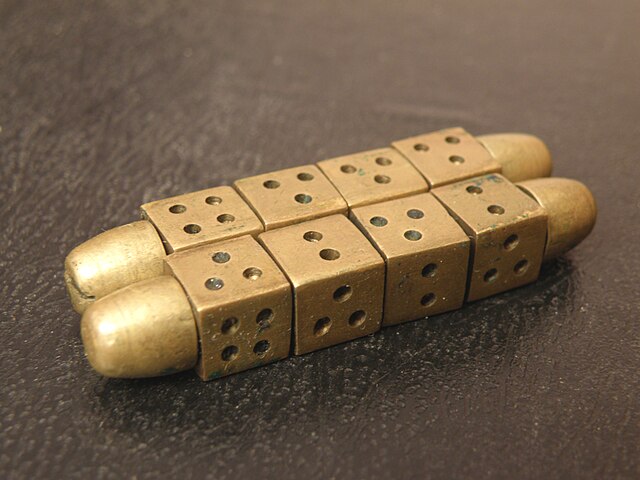Feng shui, sometimes called Chinese geomancy, is a traditional practice that originated in Ancient China and claims to use energy forces to harmonize individuals with their surrounding environment. The term feng shui means, literally, "wind-water". From ancient times, landscapes and bodies of water were thought to direct the flow of the universal Qi – "cosmic current" or energy – through places and structures. More broadly, feng shui includes astronomical, astrological, architectural, cosmological, geographical, and topographical dimensions.
A feng shui spiral at Chinatown station (Los Angeles Metro)
A traditional turtle-back tomb of southern Fujian, surrounded by an omega-shaped ridge protecting it from the "noxious winds" from the three sides
A modern "feng shui fountain" at Taipei 101, Taiwan
Sycee-shaped incense used in feng shui
Geomancy translates literally to "earth divination," and the term was originally used to mean methods of divination that interpret geographic features, markings on the ground, or the patterns formed by soil, rocks, or sand. Its definition has expanded over time, to include any spiritual, metaphysical, or pseudoscientific practice that is related to the Earth. In recent times the term has been applied to a wide range of other occult and fringe activities, including Earth mysteries and the introduction of ley lines and Bau-Biologie.
Geomancy tool
Geomantic instrument, Egypt or Syria, 1241–42 CE, by Muhammad ibn Khutlukh al Mawsuli. When the dials were turned, random designs of dots would appear, which were then interpreted. British Museum.






